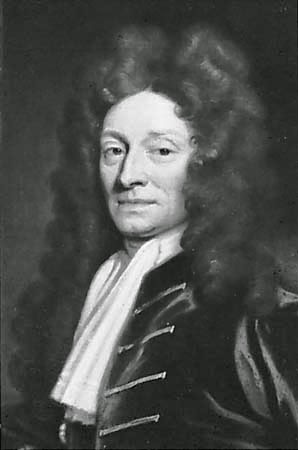 |
| Christ Church, Weems, VA |
On a recent sunny
winter day I went to Weems in Lancaster County, in the coastal
area of Virginia, to visit Christ Church, one of several 18th
century churches in the Tidewater region. While there, I had a remarkable
encounter with a local resident and saw some fascinating details about the
structure. The gentleman who shared this with me has studied all aspects of the
church for over twenty years. He cited reasons why he believes that one day the
design will be credited to Sir Christopher Wren.
But more on that
later. . .
The first Christ Church in Weems, Virginia, founded in
1670, was a wooden structure built as directed by John Carter. The current the
church, completed in 1735, is a one story cruciform or cross-shaped plan (equal
sides). Its Georgian style with symmetrical layout and pediment facade is
completely brick in Flemish bond style with a steep hipped roof.
 |
| Robert Carter Tomb |
Robert “King”
Carter commissioned the building of the current church. At the time, he was the
richest and most powerful landowner and planter in Virginia and lived nearby
at Corotoman, his plantation on the Rappahannock River. At his death,
his sons completed the building project. There is a cedar lined walk that leads
from the church to the former plantation site. Many Carter graves are located
within the church walls.
 |
| cedar lined walkway |
Christ Church
Parish is one of the best preserved Anglican parish churches in Virginia. The
craftsmanship and architecture of this brick church is stunning.
Two tablets that
contain the Decalogue, or Ten Commandments, frame the altarpiece. Canon Law
LXXXII of 1604, the Church of England required that “the Ten Commandments be
set up on the East end of every Church and Chapel, where the people may best be
able to see and read.” Even the church at the Jamestown site contains
the Decalogue.
 |
| ox-eye window |
Each of the
churches three doorways has an ox-eye, or elliptical, window centered above
them. Twelve large compass-head windows add considerable light to this
beautiful church.
There is a museum staffed by
volunteers that offers a history of the church and the Carter family to
visitors.
It was almost five
o’clock
when I arrived at the church. Because there was work being done on the roof,
considerable scaffolding surrounded it. Mr. Stewart was the lone gentleman
standing outside. He asked if I was interested in learning more about the
church. At his suggestion, I looked through the keyhole and could see the cross
illuminated by the declining sun from the ox-eye window above the door. It was
amazing. Mr. Stewart, a Horologist, one who studies the science of measuring time,
spent the next hour explaining the
connection between Wren and the Carters, and that the building was designed to
act as a sun dial as well as a Christian church. Specific dimensions, the
latitude of the church, as well as its siting on the property, were
incorporated to achieve this purpose.
“Sunlight and shadows are used to
indicate the time and the changing dates of the year, the progression of the
seasons, the dates of the equinoxes and solstices, the 'cross-quarter' days
(half way between the equinoxes and solstices), while the beam of the sun,
shining through carefully aligned oval windows, enables a pool of sunlight to
fall exactly on the tomb of one David Miles four times a year, and twice each
year the sunbeam advances and retreats across the altar table and cross.” *
 |
Sir Christopher Wren
National Portrait Gallery |
The
architect for Christ Church is said to be anonymous. Sir
Christopher Wren was an astronomer and geometrician as well as an architect. He
was the architect of the Wren building at The College of William & Mary in Williamsburg, VA, St. Paul’s Cathedral, London, The Royal Observatory, and
numerous other churches and buildings. Wren died in 1723.
I don’t know if Wren, or a student of Wren’s work, had
anything to do with the design of Christ Church, Weems. But I do find it
interesting that on Every Easter Sunday, light from the sun if it is shining,
shine through an ox-eye window on to the alter.
Below is a time compresses
video showing the sun shining on the alter on Easter of 2012.
* Horological Journal
May 1994 Vol136 No11 Pages 365-400




_-_Newbury%2C_Massachusetts.JPG)













